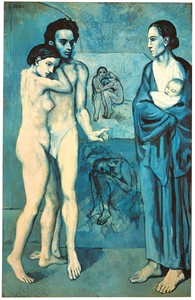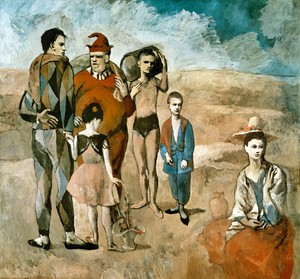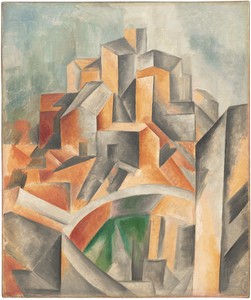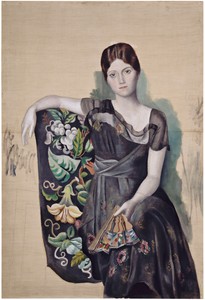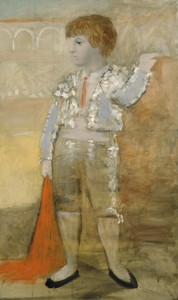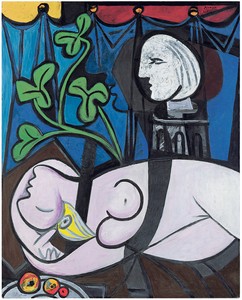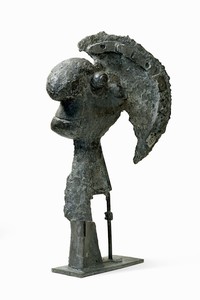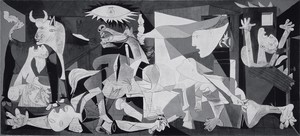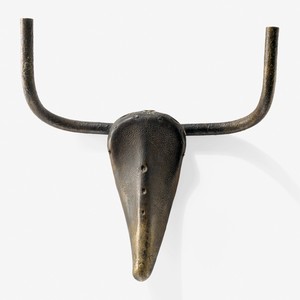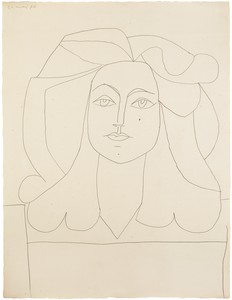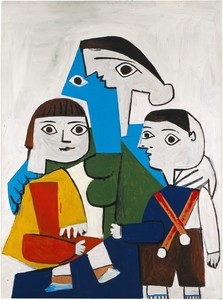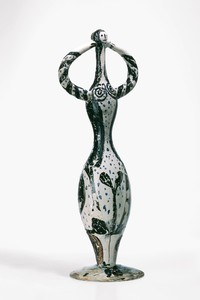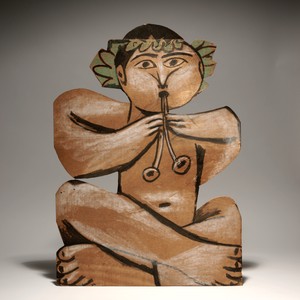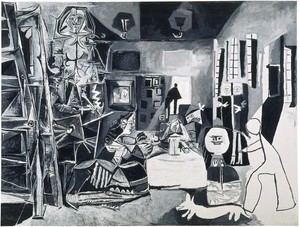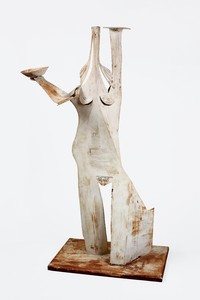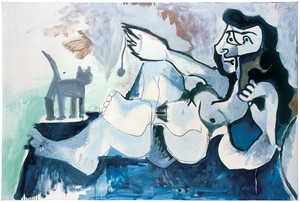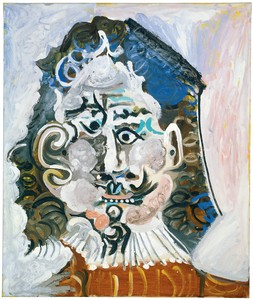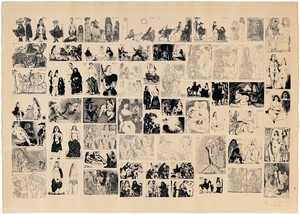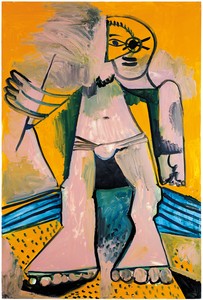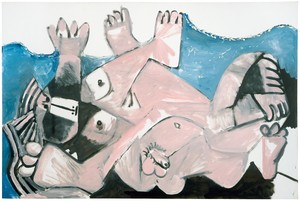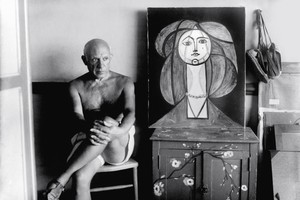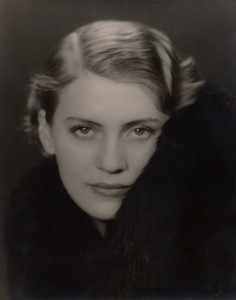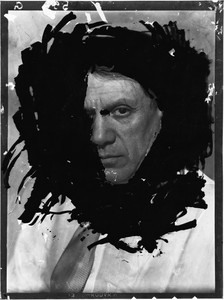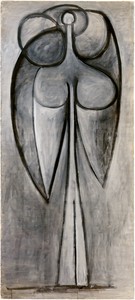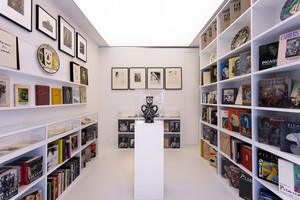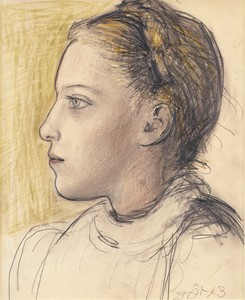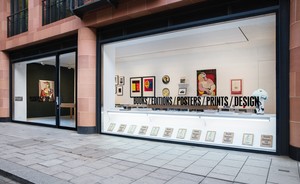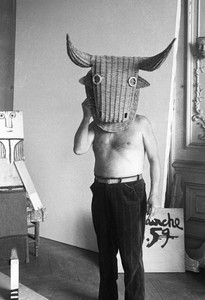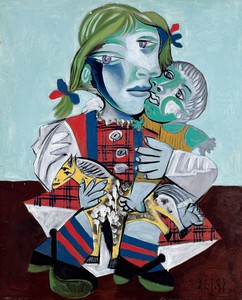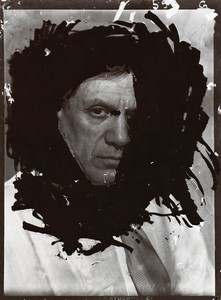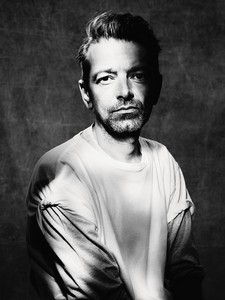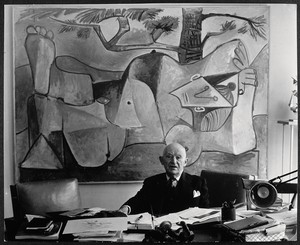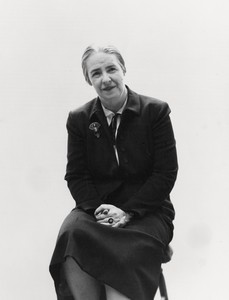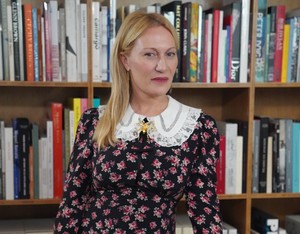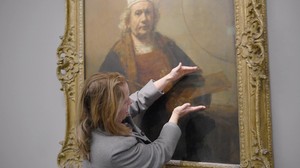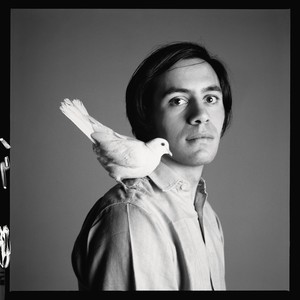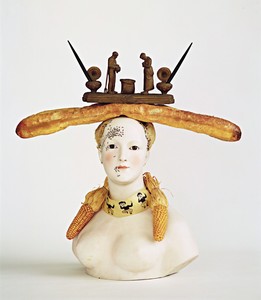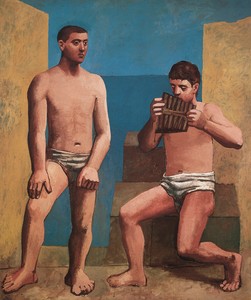Every act of creation is first of all an act of destruction.
—Pablo Picasso
Painter, draftsman, sculptor, printmaker, photographer, ceramicist, designer, playwright, and poet, Pablo Ruiz Picasso (1881–1973) contributed peerless innovations to the visual culture of the twentieth century. He created several of the great masterpieces of modernism, including Les Demoiselles d’Avignon (1907) and Guernica (1937), co-invented collage and Cubism, designed groundbreaking sets and costumes for the theater, coined the term “sur-realism,” and invented assembled sculpture (assemblage). Driven by boundless artistic energies and ambitions, he was the very personification of the avant-garde, and many of the movements of the last century could not help but develop in his orbit as artists worked consciously either to absorb his influence or rebel in his shadow.
Born in Málaga, Spain, on the Mediterranean coast, Picasso began painting and drawing under the tutelage of his father, José Ruiz Blasco, himself a painter and an art school instructor. Picasso proved to be a child prodigy, achieving a remarkable academic facility at a young age, and studied formally at art schools in La Coruña, Barcelona, and Madrid. He began to visit Paris in 1901, settling there permanently in 1904. Picasso was influenced by the Modernisme movement in Barcelona and by Post-Impressionism and the Fauves in Paris, yet developed variations distinctly his own.
Early in his career Picasso’s styles and subjects developed in tandem: the poverty in which he and his friends lived manifested in the Blue Period (1901–04); circus performers, harlequins, and the blush of love informed the Rose Period (1904–06). But for the remainder of his career, his essential subjects were perception itself, the mysteries of representation, and his own ability to create. A respect for indigenous African and Polynesian sculpture began to shape the way he depicted volume and mass in the proto-Cubist period that led to Les Demoiselles d’Avignon. With Georges Braque, he incorporated the lessons of Paul Cézanne’s facture and perspective, jump-cut shifts in time from the cinema, and the uncanny improvisations of collage and assemblage to forge the most radical approach to depicting spatial relationships since the Renaissance: Analytic Cubism (1909–12) and Synthetic Cubism (1912–19). These experiments would form the foundation of an idiosyncratic idiom that would permeate his work across all mediums and changes in style for the next fifty years.
The 1920s saw further developments in Cubism; a reflection of his Mediterranean heritage in a muscular neoclassical style; fine, Ingre-esque portraits inspired by photography; and Surrealist, sexy, biomorphic mutations influenced as much by Ovid’s Metamorphoses as by Sigmund Freud. Though his work always remained recognizably his own, Picasso could switch tracks and move between styles in a way that might suggest the work of several painters rather than a singular polymath.
Picasso dedicated much of his effort in the early 1930s to sculpture and printmaking and curated his first career retrospective, an exhibition of 236 works presented at the Galerie Georges Petit, Paris, and the Kunsthalle Zürich in 1932. In 1935 he stopped painting and sculpting for nearly a year to dedicate his time to writing poetry. As the Spanish Civil War intensified, the Republican government named him director of the Museo del Prado in Madrid (albeit in absentia) and commissioned him to create a mural for the Spanish Pavilion of the Paris International Exposition of 1937. He took as his subject the recent destruction of the Basque town of Guernica by Nazi and Italian forces at the behest of the rival Spanish Nationalists, creating one of the most enduring antiwar icons in history. Though Guernica made him a political target of the Fascist regimes, he remained in Paris for the duration of World War II, surviving the Nazi occupation.
After the war Picasso moved to the south of France, where he would reside for the rest of his life. Classical, Mediterranean themes returned to his work. He was offered a municipal museum in Antibes to use as his studio and gifted the works created there to the town, inaugurating the first museum dedicated to his work (Musée Picasso, Antibes). He engaged with the ancient pottery traditions of the town of Vallauris to create ceramics and revived his sculptural practice, making assemblages from roadside refuse and innovative silhouettes of folded sheet-metal. He also created paintings, drawings, and prints, often in series, challenging the history of painting by confronting his heroes, the great masters of the past: Diego Velázquez, Rembrandt van Rijn, Francisco Goya, Eugène Delacroix, Édouard Manet, and Edgar Degas. By appropriating their compositions, improvising on their themes, and sometimes even incorporating these masters as characters in his own invented narratives, Picasso secured his place among them.
Picasso was widely exhibited during his lifetime and continues to be so posthumously. He died in Mougins, France, in 1973, leaving no will. He was married twice: first to Olga Khokhlova in 1917, and then to Jacqueline Roque in 1961. In addition, he had partners who served as important muses to his oeuvre: Fernande Olivier (1904–12), Marie-Thérèse Walter (1927–c. 1940), Dora Maar (1936–c. 1945), and Françoise Gilot (1943–53). He had five children: Paul (with Khokhlova), Maya (with Walter), Claude (with Gilot), Paloma (with Gilot), and a stepdaughter, Cathy (Roque’s daughter from a previous marriage). The settlement of Picasso’s estate in 1979 allowed for the establishment of the Musée national Picasso, Paris.
